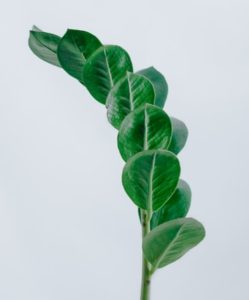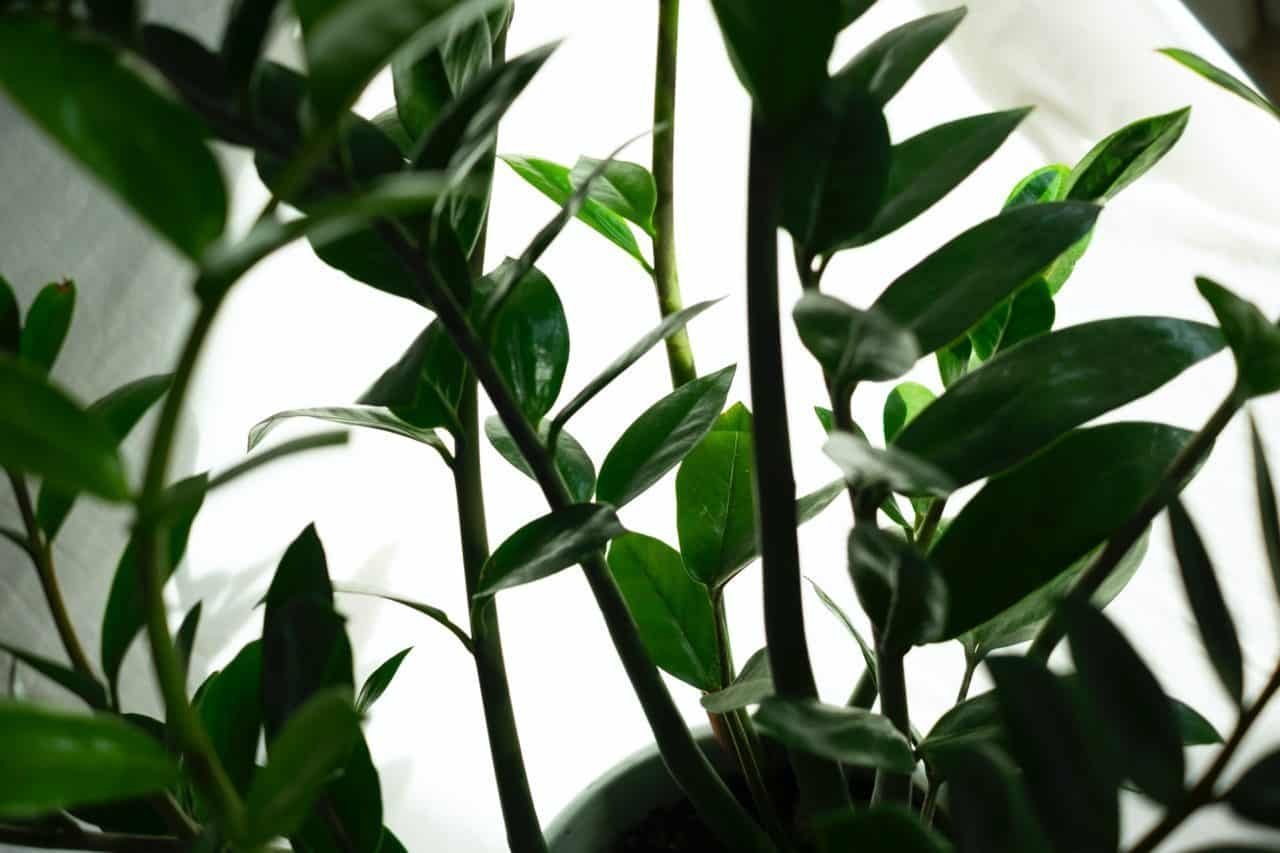Some links in the post are affiliate links and I get a commission from purchases made through some links found in the post.
When you are new to gardening, starting with hardy plants that require minimal care is often advisable.
The ZZ plant (full name Zamioculcas zamiifolia) would be a wonderful option for you as it ticks both these boxes.
It also works for people who would rather spend time admiring their plants rather than caring for them.
Whatever your reason for wanting hardiness, this East Africa-originating plant would serve you well.
It does well in zones 9 and 10 and should be easy to take care of, save for a few potential problems.
Today, we look at why your ZZ plant may suffer drooping and what you can do about this:
Why is your ZZ Plant Drooping?
For a plant known to survive on minimal care, it would be quite shocking to see your ZZ not doing well and drooping over.
However, you may notice that some people have faced drooping due to one reason or the other.
The main reason a ZZ plant might be drooping is due to watering issues, mainly overwatering, and inadequate light. This can lead to root rot or leggy growth.
If this is not the issue then it could be due to fertilization issues, temperature problems or transplant shock.
The best way to deal with this problem is to understand its cause and provide a solution to the causative factor. Below are likely causes:
Overwatering
Giving your plant water seems like a natural process without which the plant would not survive.
Even so, you need to understand what conditions are best for the plant in question.
The ZZ is native to East Africa, where tropical climates rule the day. Additionally, it is a succulent with a well-developed rhizome system capable of storing enough water away for dry periods.
As such, it can withstand long periods of dryness without dying. Watering it more than is necessary would lead to the soil being wet constantly as the plant will not take in more water than it needs.
If your plant seems to be falling over, the soil likely contains more water than is necessary.
The water negatively impacts aeration, leading to the development of unhealthy roots that lack oxygen.
Anaerobic bacteria and fungi also thrive in such environments, paving the way for root rot.
Unfortunately, root rot is not usually easy to diagnose until it has affected the plant a great deal.
Ideally, it would be best to check for root rot when the leaves start yellowing.
If it gets to the point of falling over and drooping, it might be quite hard to save the ZZ plant. That is not to say that it is impossible.
Underwatering
This reason may seem strange, more so for a succulent that does best in arid conditions. However, your plant can also droop due to a lack of water.
The longer your plant stays in this underwatered state, the easier it will be for it to become dehydrated.
The cells will start losing water, and the leaves will appear flaccid, dry, and drooped. The stems will follow and start falling over.
The good thing with this cause is that reversing it is much easier than with overwatering.
Lighting Issues
A ZZ plant does best in indirect light, ranging from moderate to bright intensity.
However, you can move away from this by a certain degree without adversely affecting the plant.
For example, the ZZ plant can be in a spot that receives direct sunlight for a while without drooping or dying.
However, when the degree is too much, your plant may start showing signs of drooping.
Too Much Light
While plants generally lean towards the light, the ZZ tends to be more averse to lighting.
As such, if you place it in brightly lit conditions, it can start moving its stems away from the light.
The leaves can also react by drooping and showing a yellow hue. In time, they can start curling and shedding.
Reduced Lighting
While too much lighting is not good, keeping the plant in a poorly lit area will not help matters either.
In these conditions, the plant will start moving towards the light, thereby creating an arch. The stems will thus appear drooped, affecting the beauty of the plant.
Fertilization Problems

If you notice your plants yellowing with the stalks falling over, the soil’s nutritional profile could be to blame.
As much as ZZ plants can do well without much fertilization, the nutrients may not be enough to sustain the plant’s growth.
Also on this, you should note that fertilization problems can be two-way.
It could be that your plant has more fertilizers than it needs or a lack of the same. Be sure to check the fertilization frequency to understand what applies in your plant’s case.
Temperature Variations
Temperatures affect how well your plant does. Anything in the ranges of 65°F should be fine, and the plant would thrive in such conditions.
However, once the range dips below 45°F, the plant can suffer stunted growth.
As the temperatures lower, wilting and falling off of leaves can take place, accompanied by breaking off of stalks.
Where such changes occur, you must act fast to save the plant from going into shock that could kill it.
Transplant Stress
As your plant grows, it will outgrow its containers, calling for the need for bigger pots. Transplanting should go down easily.
However, there might be cases where the plant will show signs of shock owing to root disruptions.
One of these signs is the slumping of stalks. It could be due to lack of water, damage to the roots, or some other reason.
How to stop your ZZ Plant Drooping
The best way to stop the drooping will depend on the cause as follows:
Overwatering
Where overwatering is to blame, you need to move the plant from its original pot, having inspected the roots.
Such roots will be fragile and mushy, and you should get rid of them using pruning equipment.
Take what is left of the plant and move it to another pot with well-draining soil.
The pot should have adequate drainage holes with the soil having good aeration to allow for the development of healthy roots.
It should be similar to the original pot unless the plant had outgrown the initial container. From here onwards, you should only water the soil when it is almost dry and not when damp or wet.
Underwatering
If you suspect that lack of water is to blame for the plant’s change in appearance, start by checking the soil.
If it feels completely dry to the touch and the plant has drooped, water the soil adequately. The plant should absorb the water, filling its cells and breathing life to the drooping leaves and stems.
Make sure that you soak the soil such that the excess runs through the drainage holes. Also, allow the excess water to drain from the pot before leaving the plant in a well-lit spot.
To make sure that you get the watering right, you need to assess the growing conditions. Some places are so hot that watering needs to take place each week.
In others, you can water the soil once a month, and the plant would be fine. Instead of using a universal standard, work with what applies to your plant.
Lighting Issues
With light, you need to figure out if the lighting is too much or too little. Where the light is too much, you should move the plant to an area with less access to direct sunlight.
Alternatively, you can prevent the plant from getting direct access by using blinds or other measures.
For lighting that is too low, consider moving the plant to a window or any other space in the house that receives moderate to bright indirect light.
You can also choose to supplement light sources using LED grow lights and fluorescent bulbs.
Fertilization Problems
For the most part, your ZZ should do well, even in the absence of inputs. However, depending on the potting mix, you may find that you need to fertilize the soil.
Before fertilizing it, you need to ensure that you have eliminated all other possible causes. Only then can you rely on this method as a means to deal with drooping.
Fertilizing should take place periodically, ideally every six months, using a water-soluble mix.
Suppose the drooping continues even after using the mix, you might be using the wrong type or amount of input.
Note that using a fertilizer that is too strong can also burn the roots. Where you suspect that the formula might be affecting the plant, repotting is a good idea.
Temperature Variations
The best way to deal with a plant that has been exposed to cold temperatures below 45°F is to check for damage.
Get rid of any parts that have suffered damage before moving the plant to a warm area.
The plant should remain here with access to bright and indirect light as it recovers from the stress.
In a few weeks, the results of the change should be evident, with the plant growing stronger and standing tall.
Transplant Stress
 The best way to avoid causing such damage to the plant is by moving it to bigger containers during wet months.
The best way to avoid causing such damage to the plant is by moving it to bigger containers during wet months.
That way, the roots will not dry up fast upon the plant being moved to another container. Also, give the plant time to recover, and it should soon be fine.
Sometimes, the damage may owe to physical damage to the plant caused by rough treatment of the stalks and leaves.
If this happens, the stalks can break, droop, or fall over. Unfortunately, not much can be done to reverse this situation, save for the pruning of the damaged parts.
Thus, it is better to exercise great care when handling these plants, no matter how hardy they seem.
Before you go, here are some more related articles I encourage you to read below to help solve more of your gardening issues:
Why are your Bird of Paradise Leaves Drooping
Happy Gardening!
Written by: Daisy Njeri


